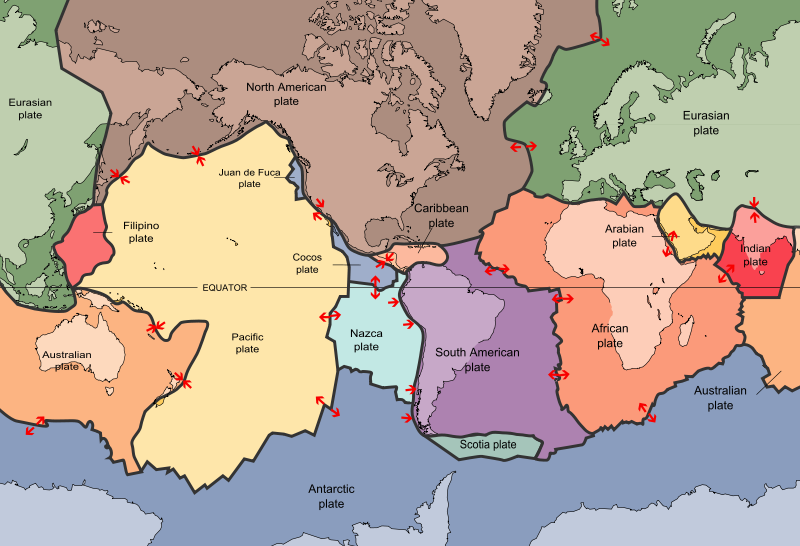By: Chris Besik
As New Zealand recovers from a cluster of powerful earthquakes and after-shocks, earthquake experts in Canada say this country could be rocked by similar quakes on our West Coast.
“People in Vancouver have chosen to live there, so they’re going to get an earthquake every 100 years or so and in California the same,” says Russel Pysklywec a professor at the University of Toronto.
“Be aware that it will happen, and construct your buildings appropriately.”
Pysklywec says the world is broken up into about seven different Tectonic plates that cover the earth’s surface.
Canada’s west coast is split up by two major plates the Pacific plate and the North American plate dropping British Columbia and Vancouver directly on the fault line of where these two plates meet.
“As they slide along beside each other their also colliding so it’s like two cars side-swiping each other but crashing into each other at the same,” says Pysklywec.

A diagram of a subduction zone, labeling the different parts of the earth and how they collide and make contact.
Earthquakes cant be prevented, but for people living in a fault zone there are ways to anticipate and prevent extensive damage. Extra measures can be taken to insure structures are durable enough to withstand various quakes.
“All people living in earthquake prone areas experience a constant battle to update building code and make structures more earthquake proof,” says Pierre Robin, a University of Toronto professor and expert in earthquakes and tectonics.

The California-fault-line also known as the Juan de Fuca plate. It is surrounded the North American plate and the Pacific plate.
Pysklywec says that earthquakes like the one in New Zealand are quite common and similar to San Andreas quakes on the California plate. People should be prepared when they live in an area prone to earthquakes.
“They have chosen to live within the plate boundary so all they can really do is make sure their houses’ are constructed with earthquake proof methods,” says Pysklywec.
The New Zealand quake with a magnitude of 7.5 quake hit just after midnight on Monday offshore of Kaikoura. Two people died during the quake or in the aftershocks.
New Zealand’s Civil Defense and Emergency Management program also registered a 6.6 magnitude aftershock southeast of Seddon at 4:26 a.m. which sparked concern of a possible tsunami.
At least two people killed in powerful New Zealand earthquake https://t.co/pgU1DKHpPo pic.twitter.com/xeBxDO2jo0
— CP24 (@CP24) November 14, 2016
“This one occurred offshore, and so any of these offshore earthquakes have the potential to spawn a tsunami, there were warnings and there were high water levels with this one,” says Pysklywec.
New Zealand’s civil defense says a tsunami is no longer a threat, but is urging people to prepare for further after shocks.
“Once the swarm, which could last many days is over they will leave their houses and go up to the highland to avoid the impact of the Tsunami’s,” says Robin.
Holy cow!
Family of cows survive New Zealand earthquake stranded on an ‘island’#nzearthquake #eqnz pic.twitter.com/Fhp92k7IZQ
— Soapbox (@soapbox_soapbox) November 14, 2016
Emergency response teams spent Monday working in communities across the island.
“New Zealanders are shaken but are coming together and supporting each other. If people have tried all available contact methods to reach loved ones and been unable to do so they should contact their local Police station,” says Mrs. Stuart-Black Director of the Ministry of Civil Defense and Emergency management in a post on their website.
This is the second earthquake to hit New Zealand since 2011 when a 6.1 magnitude quake struck the island in the Christchurch area claiming 185 lives.
The country’s location on the Indo-Australian Plate and Pacific Plate is to blame for the quakes.
“On the northeast side you have a regular subduction zone where the Pacific Ocean is going down westward under the Australian plate on the South end under the South Island you have an eastward dipping subduction zone where the Indo-Australian plate is going down under the pacific plate,” says Robin at the UofT.
He explained how all these earthquakes will occur just in the transition zone, where a northwestward dipping zone on the north side borders a southeastward dipping zone on the south west side.
“It is not a simple subduction zone, there is compression there is sheering, you are going to have a lot of earthquakes that will not be very large but will last for a long time,” says Robin.
https://www.youtube.com/watch?v=RjuE9jT04xM

